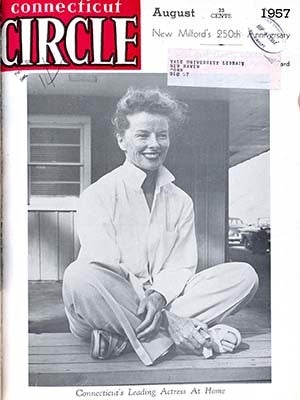Yale’s Gitlin to lead panel on ‘The Rebranding of Connecticut’
Yale historian Jay Gitlin will lead a panel discussion on “The Rebranding of Connecticut” on Tuesday, Dec. 4 at 6 p.m. at the New Haven Museum, 114 Whitney Ave.
The discussion will focus on the topics explored in “Country Acres and Cul-de-Sacs: Connecticut Circle Magazine Reimagines the Nutmeg State, 1938–1952,” a new publication edited by Gitlin and published by the Acorn Club. The book features articles and images from the publication Connecticut Circle from 1938 through 1952, a pivotal period in the state, and the nation. The free event will be followed by a book signing.
As Gitlin writes, 1938 was the year that included the opening of the Merritt Parkway, a devastating hurricane, and a transformative election that saw Republican Raymond Baldwin replace Governor Wilbur Cross. Connecticut Circle magazine began published in January of that year and covered the news, recreation, politicians, and products of the state in a critical period that included World War Two.
According to Gitlin, Connecticut Circle was a combination of news magazine and real estate prospectus that aimed to attract a tonier new demographic. It promoted and projected the image of the state as a residential haven suitable for artists, celebrities, gentleman farmers, and those who fled the city to second homes for the weekend.

During “The Rebranding of Connecticut,” the panel will discuss how the issues and images of that period continue to shape the state today.
Joining Gitlin will be Helen Higgins, former executive director of the Connecticut Trust for Historic Preservation, who specializes in historic preservation and the history of Connecticut and who wrote the introduction to the “Connecticut Writers, Artists, Musicians, and Actors” section of “Country Acres and Cul-de-Sacs.” Higgins points out that the magazine’s selling of Connecticut was augmented by profiles of cultural icons who lived the good life, creative people whose breezy lifestyles reflected the publication’s interest in constructing a picture of Connecticut life as idyllic.
Also on the panel will be Patrick Pinnell, principal of Architecture & Town Planning, LLC, whose expertise is in the history of land use, planning, and architecture. In “Country Acres and Cul-de-Sacs,” Pinnell introduces the sections “Business, Industry and Transportation” and “Advertisements and Illustration.” In the latter, he points to a Connecticut mindset that considered itself not simply at the edges of two big cities but at the center of affairs, perhaps uniquely capable of originating ideas and teaching values.
Gitlin and his colleagues will also highlight some lesser-known tidbits of Connecticut history, such as the suspected graft in the purchase of 1,850 acres for the development of the Merritt Parkway, which was investigated by a Grand Jury. The group may also share tidbits from articles such as “Connecticut: An Oasis in the Desert of Taxation” (1938) or a proposed cure for Hartford traffic.
The New Haven Museum — formerly the New Haven Colony Historical Society —brings more than 375 years of New Haven history to life through its collections, exhibitions, programs and outreach. For more information visit the New Haven Museum website, Facebook page, or call 203-562-4183.